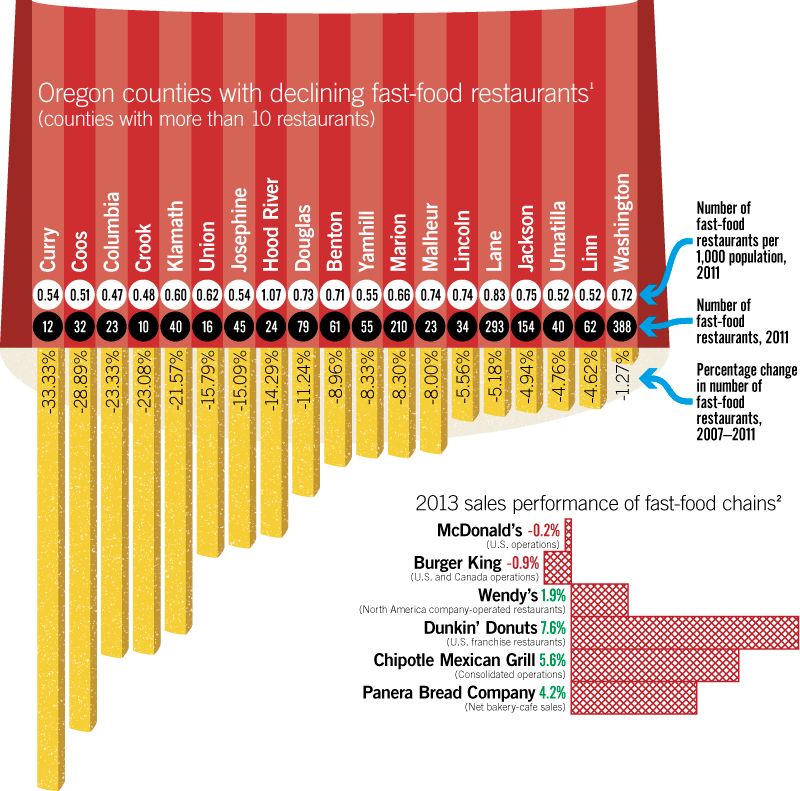BY KIM MOORE
The ubiquitous fast-food restaurant may be on the decline.
BY KIM MOORE
The ubiquitous fast-food restaurant may be on the decline. Data show the number of convenience food eateries is generally falling in the U.S. Public awareness of the benefits of healthier eating, rising commodity prices and market saturation are hurting the industry. An online food atlas, published by the United States Department of Agriculture, shows the number of fast-food restaurants declined or remained the same in several Oregon counties in 2007-2011. Recent financial data from two large fast-food chains — McDonalds and Burger King — indicate that, nationally, these companies have flat to lower sales revenues because of fewer customers.
Not all fast-food chains are feeling the heat: Dunkin’ Donuts U.S., the coffee and baked-goods chain, opened 371 restaurants in 2013. Sales grew 7.6% as customers bought more per transaction, such as higher-priced cold beverages and sandwiches. Restaurants in the fast-casual segment, such as Chipotle Mexican Grill and Corner Bakery Cafe, have stronger sales as customers become willing to pay more for fresher ingredients and a neighborhood cafe atmosphere. Fast-casual sales grew 11% in 2013, while limited-service chains grew by only 3.5%, according to Technomic, a food-industry consultant.


